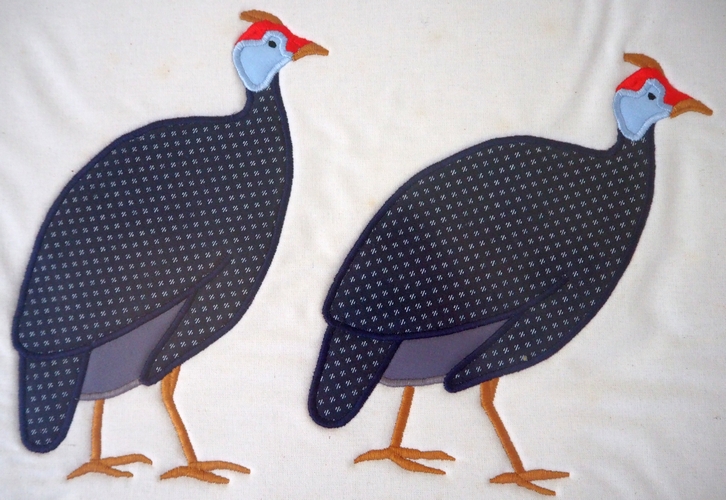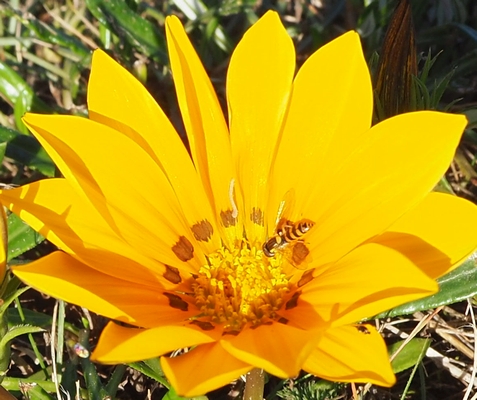Losing the Three Percent
My mother used to tell me, when I had a side-line in making applique items, that 97 percent was good enough. This from the woman who had previously told me that if I didn’t unpick a crooked seam, I’d keep seeing the flaw.

Aiming for 97 percent taught me that perfection is impossible: there would always be something else that I could do to tweak a cushion or a wall hanging into a higher sphere, but I saw the time to effort ratio skew exponentially towards craziness.
It’s been a good 20 years since I sat at my sewing machine, but my mother’s words have remained with me—she didn’t give me much advice, so it is comforting to be able to follow something. It has helped me decide when to pause the research and start to write—especially when a story is about people who died more than a century ago and one cannot know the whereabouts of the full stop.
The latest story on the Early Settlers page, about the Grofski (Grochowski) family, is an example of how sometimes, things fall into place. I mentioned my frustration at being unable to find the death details of the New Zealand patriarch, Simon Grochowski, at a talk I gave with Polish historian Ray Watembach during a Christchurch Heritage Week in 2018. The subject was the Poles who arrived in Christchurch in 1872, and the family was part of the story Marshland, The Place Where Flax Grows Profusely.
One of Simon’s descendants happened to be in the audience and came up to chat afterwards. He sent me a copy of Simon’s death certificate and other family documents and I started to chase a man who in 1883 had been buried under the misspelling of his wife’s maiden name. The cemetery on the death certificate says Lincoln, but I can find no inkling of his presence there, nor in any other cemetery in the Christchurch or Selwyn areas.
The Grochowski name had at least 25 different spellings before Grofski became official in 1893: “Mr and Mrs S F Grofski… respectfully informed” their friends about the funeral of their 10-year-old daughter Annette. I like to think that their four living sons, 10 years after their father died, were making a point: after years under the influence of what in fairy tales would be called a “wicked stepfather,” and the death of another sister just months earlier, they were reasserting their original family.
The Grofski spelling stuck. Until then, other spellings included Crokowsky, Gerosky, Glogoski, Grahofski, Grofskey, Grofsky, Grogoski, Grokowska, Gronfsky, Gronkosski, Gronkouski, Gronkovsky, Gronkowski, Groschkowski, Grosenosky, Grosewski, Groshinski, Groskwsky, Grosrkowski, Groszkowski, Groufsky, Groukowski, Growchowski, Growszk, and Grojeski.
I first came across the name when researching the Marshland Poles. Another early settler in Marshland, Wilbur John Walter, wrote in his memoirs that Mrs Frances Grofski “and her family worked very hard on the[ir] place.” The array of farming stock and implements that Mrs Frances Grofski sold before she remarried in 1903 showed that she had become a solid farmer in the area.
I still need to go back to the Marshland story to amend an assumption I made that Mrs Grofski’s husband had been the one to register their son’s death in 1876. Unlike a crooked seam, the flaws in my stories don’t make themselves known immediately.
When I was sewing, I knew exactly what I had to work with: the machine, the fabric, the design, the thread, and the time pressure. All had their foibles, but it was a finite set. Writing about early settler families is like not knowing whether one is working with leather, velvet or silk, with a design that generally only makes itself known well into the process, and with fine threads that often remain hidden under heavier ones.
There is no way that I can estimate how long any of my stories will take to hatch. I cannot guarantee them like I used to with cushions: six by next week. But there is something about trying to capture and make sense of ephemeral moments that makes research and writing about families like the Grofskis so special.

This bee knows what the job entails: returning time and again to both known and different sources of nectar. I saw it on this gazania on yet another trip to the Linwood cemetery in Christchurch. I was looking for the unmarked graves of the Grofski sisters, and had included it in my photographs before I could confirm that the flower happened to be above those graves.
I’ve swapped the impossible perfection of 97 percent for discovering the pleasure of patience and uncovering the unexpected rewards of research.
—Barbara Scrivens
31 July 2022
_______________
For a fuller story on the Grofski family, go to https://polishhistorynewzealand.org/the-grofski-grochowski-family/
Marshland, The Place Where Flax Grows Profusely is available at:
https://polishhistorynewzealand.org/marshland/
If you would like to comment on this post, or any other story, please email editor@polishhistorynewzealand.org/
